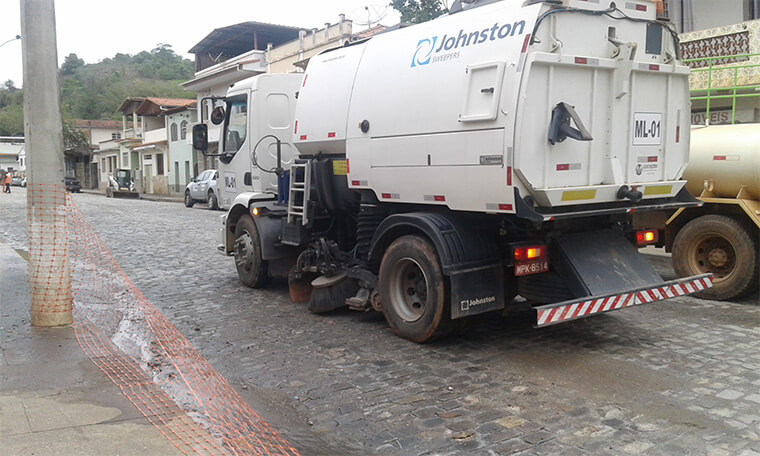Actions are part of the atmospheric monitoring of recovery works
The air quality control measures in Barra Longa and in the district of Gesteira, Minas Gerais, have been reinforced in recent months by the use of a truck-sweeper and two mist-spray guns for the humidification of urban roads, construction sites and unpaved accesses. “In addition to vacuuming the dust, the equipment humidifies the street, preventing dust particles from being suspended by passing vehicles,” says Pedro Ivo, who works in Environmental Management of the programs developed by the Renova Foundation. The work was already being carried out by water tank trucks, with a capacity of 10 thousand and 20 thousand liters, which will continue being used as part of the atmospheric monitoring of the recovery works.
The pavement of the streets is also periodically inspected, cleaning the central roads and gutters and collecting waste. This is a way of minimizing the dispersion of particulate matter released by the urban infrastructure works in Barra Longa, such as the renovation of the Manoel Lino Mol Square and Beira Rio Avenue, already reopened to the community.
Another measure that contributes to reducing the spread of dust is the revegetation of slopes along the rivers and exposed areas. “The vegetation protects the soil from erosion caused by rainwater and prevents the wind from carrying particulate matter,” explains Pedro Ivo. So far, planting of grass has already been carried out on 808 hectares.
In addition, new methodologies and alternative technologies are being studied to further improve environmental controls. Tests with polymers, dust-suppressing products based on macromolecules of plant origin, were made in three types of roads (unpaved, asphalted and paved), with the knowledge of local government. Applied on natural surfaces, it produces a better chemical stability of the structural characteristics of the soil and control of the emission of dust, without risks to health, safety and the environment.

Air quality control work in Barra Longa (MG).
MONITORING
The air quality monitoring station of Barra Longa measures the concentration of suspended particulate matter in the atmosphere and analyzes if the results meet the parameters established by the environmental legislation of the National Council of the Environment (Conama). An hourly report is issued with the average amount of material found during the period. Meteorological aspects such as relative air humidity, wind speed and direction are also evaluated. “These data are cross-checked with the results of the monitoring and help map the sources of particulate matter emission, contributing in a way that makes the conclusions more assertive and the control more effective,” explains Pedro Ivo.
In October, the concentrations of Total Suspended Particles (PTS) exceeded the limit established by Conama, which is 240 mg/m3, due to the completion of infrastructure works in the central regions of the town, the paving of the Manoel Lino Mol Square, which hindered the area from being wet. However, after the inauguration, the results of daily monitoring returned to normal PTS indexes.
